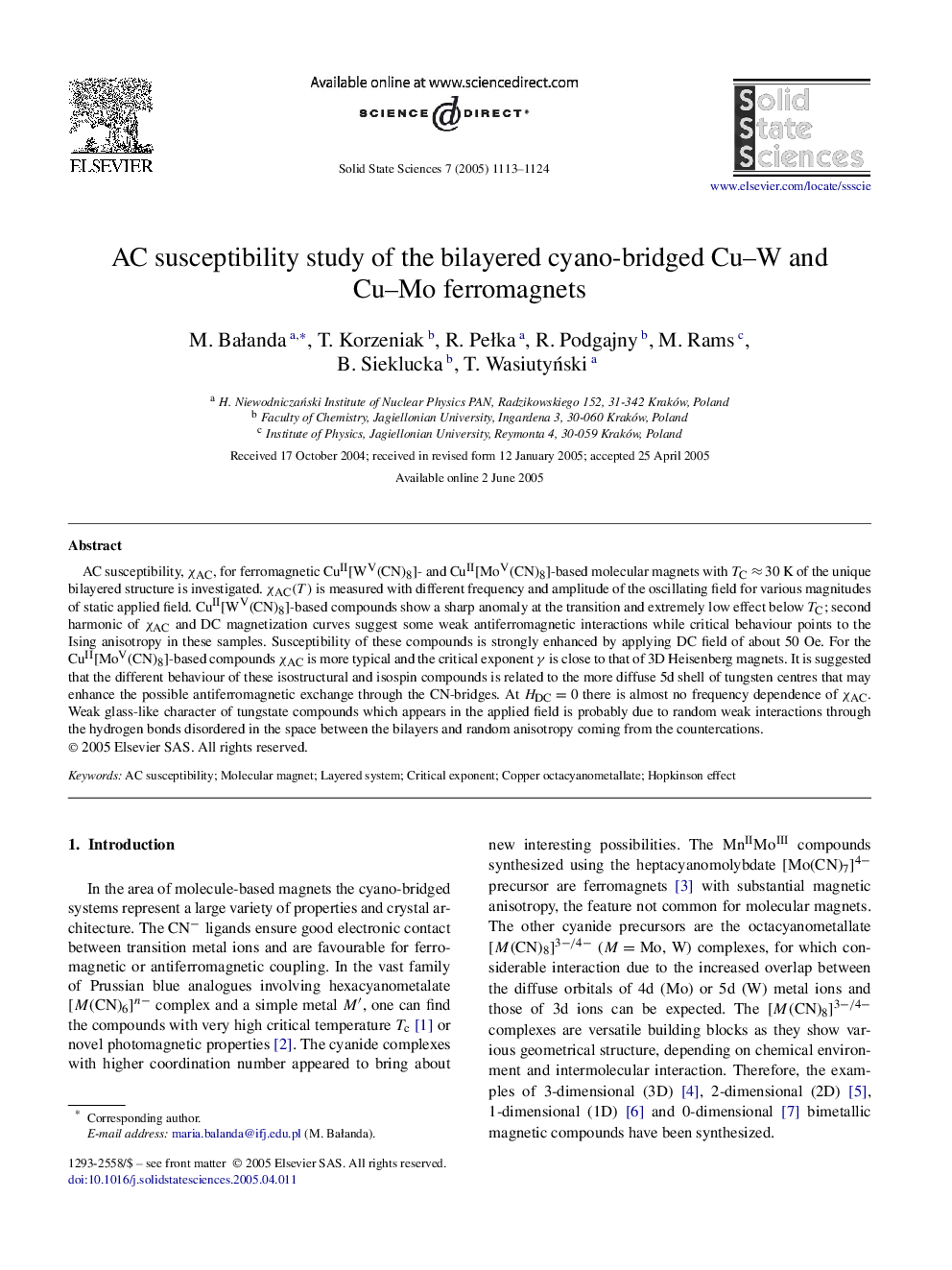| Article ID | Journal | Published Year | Pages | File Type |
|---|---|---|---|---|
| 10636729 | Solid State Sciences | 2005 | 12 Pages |
Abstract
AC susceptibility, ÏAC, for ferromagnetic CuII[WV(CN)8]- and CuII[MoV(CN)8]-based molecular magnets with TCâ30K of the unique bilayered structure is investigated. ÏAC(T) is measured with different frequency and amplitude of the oscillating field for various magnitudes of static applied field. CuII[WV(CN)8]-based compounds show a sharp anomaly at the transition and extremely low effect below TC; second harmonic of ÏAC and DC magnetization curves suggest some weak antiferromagnetic interactions while critical behaviour points to the Ising anisotropy in these samples. Susceptibility of these compounds is strongly enhanced by applying DC field of about 50 Oe. For the CuII[MoV(CN)8]-based compounds ÏAC is more typical and the critical exponent γ is close to that of 3D Heisenberg magnets. It is suggested that the different behaviour of these isostructural and isospin compounds is related to the more diffuse 5d shell of tungsten centres that may enhance the possible antiferromagnetic exchange through the CN-bridges. At HDC=0 there is almost no frequency dependence of ÏAC. Weak glass-like character of tungstate compounds which appears in the applied field is probably due to random weak interactions through the hydrogen bonds disordered in the space between the bilayers and random anisotropy coming from the countercations.
Related Topics
Physical Sciences and Engineering
Materials Science
Ceramics and Composites
Authors
M. BaÅanda, T. Korzeniak, R. PeÅka, R. Podgajny, M. Rams, B. Sieklucka, T. WasiutyÅski,
